This well researched article from Juliet Dale compares the price, location of manufacture, packaging, SPF, standards, quantity required, amount required, active ingredients, reef safety and water resistance of nine eco-friendly sun screens (including Sun Butter that we sell) available right here in Aotearoa.
Juliet has a fantastic website and blog ‘The Great Eco Journey’ where she helps people to make simple changes in their lives to reduce waste and live more sustainably.
“After nearly three months of trialing, researching and learning, it’s here: The Eco-friendly Sunscreen Article! I’m not going to lie, I quickly realised that I had bit off more than I could chew with this one. I thought I could just compare the prices, ingredients, packaging, SPFs and water resistance of the sunscreens, and leave the science stuff to the scientists… but I have learnt that there really is a LOT more to sunscreens than meets the eye, and that science and sunscreen cannot be separated.
I have spent many hours lost down a rabbit hole of terms and technologies far beyond my School Certificate Science! But I have emerged, far more informed, and ready to share what I’ve learned. So, while I’ve kept this as user-friendly as possible, I simple cannot publish this without including first some (simplified!) information on four things; the two main types of sunscreen, SPF, certifications and reef safety.”
Navigating this article:
-Physical Sunscreen
-Chemical Sunscreens
-Certifications
-SPF and Broad Spectrum
-Reef Safety
-‘At a Glance’ table comparing price, location of manufacture, packaging, SPF, standards, quantity required, amount required, active ingredients, reef safety and water resistance.
-Seasick Sunscreen Co
-Sunbutter Sunscreen
-Essone
-Frankie Apothecary
-We Are Feel Good Inc
-Skinnies
-My Sunshine
-Earth’s Kitchen
-Conclusions
THE TWO MAIN TYPES OF SUNSCREEN:
There are two types of sunscreen; physical blockers and chemical absorbers. Here is a simple summary.
Physical Sunscreens / Physical Blockers (aka natural / mineral sunscreen) (zinc oxide / titanium dioxide) work by sitting on top of the skin to form a shield, reflecting or scattering UV radiation and are effective at protecting against both UVA and UVB radiation. Physical sunscreens are usually more natural than the chemical absorbers. Often good for sensitive skins, as they are not absorbed into the skin, and also less likely to be pore-clogging. Physical sunscreens may leave a white-ish cast on the skin, and tends to be thicker, requiring more effort to rub in. Needs to be applied generously and accurately to offer full protection.
Chemical Sunscreens / Chemical Absorbers (ie octinoxate, oxybenzone, avobenzone, and homosalate.) work by absorbing UV rays and changing them into heat, then releasing that heat from the skin. Chemical Sunscreens can absorb UVA or UVB, or will often have a combination of ingredients to absorb both. Chemical sunscreens tend be be thinner and easier to spread, they also require less to get coverage. As they need to be absorbed into the skin, they generally require 10-15 minutes to become effective after application. https://blog.reneerouleau.com/chemical-vs-physical-sunscreens-pros-cons/
Certifications:
Despite the fierceness of the sun here, and the fact that we have some of the highest melanoma and skin cancer rates in the world, the SPF standards and regulations in NZ are ridiculously lax, in fact, near on non-existent. In 2019, Consumer Magazine exposed just how flimsy our regulations were when it put a number of sunscreens for sale in NZ to the test, and the majority did not meet the SPF that they claimed to be.
In NZ, sunscreens are classified as Cosmetics. There is a push to include sunscreens as a therapeutic product which would require them to comply with the NZ and Australian sunscreen standard (AS/NZS 2604). The sunscreen standard is mandatory in Australia but voluntary here. There is also no requirement here for regular testing.
All of the NZ sunscreens in this article have opted to be tested against the AS/NZS 2604 sunscreen standard. You can check this under the ‘SPF’ section of each product.
What does an SPF number actually mean? And what about Broad Spectrum?
An SPF15 sunscreen that’s properly applied is meant to give you 15 times the protection you’d get with unprotected skin.
So if you were outside in the sort of sun that burns unprotected skin in 10 minutes, then SPF15 would give you 150 minutes of protection. For SPF30 sunscreen, that time would extend out to 300 minutes and for SPF50 it would be 500 minutes.
These times will vary from person to person because of skin type, activities (such as heavy exercise or swimming) and how well the sunscreen is applied. No matter how high the SPF, any sunscreen should be reapplied regularly – every two hours you’re in the sun.
No sunscreen blocks 100% of UV rays: SPF15 blocks 93% of UVB, SPF30 blocks 97%, and SPF50 blocks 98%.
A sunscreen’s SPF refers mainly to the amount of UVB protection in provides. It’s important to look for the words “broad spectrum” on a product’s label, which means it has ingredients that can protect you from UVA as well as UVB rays.
Reef Safety
This is where the rabbit hole got really dark and deep! You see, research into the affect of chemicals in sunscreens on coral reefs is still relatively new (within the last 12 years), and, to make matters more confusing, the term “reef safe” doesn’t have an agreed-upon definition, and therefore isn’t strictly regulated by government. Here is what we do know: Coral reefs – those incredibly beautiful and important living structures – are under increasing threat around the world, mostly due to the increasing water temperatures from climate change… but there’s another threat, too – sunscreen worn by swimmers and snorkelers.
There is an increasing amount of strong evidence showing that chemicals used in many sunscreens are harmful to our coral reefs, worsening coral bleaching. Coral bleaching occurs when the tiny algae that live inside the coral, are killed or forced to leave the coral by increased water temperatures or chemicals. These algae are living marine plants, which photosynthesise, creating the beautiful colours in coral reef – therefore, when they die or leave, the reef loses it’s colour aka ‘reef bleaching’. The reef is not technically dead, but it relies on these algae to return quickly for it to survive.
More info: https://ethique.com/blogs/zero-waste/is-your-reef-safe-sunscreen-really-reef-safe
The research has become clear enough that Hawaii has now banned some chemicals in sunscreens. The Hawaiian Reef Bill focuses on two chemicals – oxybenzone and octinoxate – that are found in many sunscreens and are believed to be one of the causes of reef damage. The NZ Dermatological Society recommends using sunscreens without them. (The two Chemical Absorber sunscreens in this article do not use oxybenzone or oxtinoxate) There are some other chemicals that are also being shown to have damaging affects on our marine life and reefs. There are big question marks over octocrylene, avobenzone, homosalate and octisalate, but the research is still in progress.
AT A GLANCE
This is not a competition. There is no winner. My intention was never to pit these brands against one another, or try to catch them out. Rather I wanted to celebrate eight awesome local, eco-friendly sunscreen creators, and give you, the consumer, the information that you need to make an informed decision. We all have different wants, needs and values when it comes to sunscreens, we all have different budgets too (I have commented in more detail about price at the end of the article), so how amazing is it that we have all these fantastic options available?!
The facts provided have been checked by the sunscreen makers, and the opinions on ‘feel’ and ‘spreadability’ are entirely my own and my children’s (and a few friends who I roped into a blind trial). Please note that my son Brady HATES getting sunscreen put on; I have referred to him as ‘my fussy sunscreen wearer’. Thank you so much to the Seasick Sunscreen Co, Sun Butter Sunscreen, We Are Feel Good Inc, My Sunshine, Earth’s Kitchen, Essone, Skinnies and Frankie Apothecary for taking part in this article.
At A Glance
SEASICK SUNSCREEN CO
Price: $30.00 for 70g tin or $50 for 150ml
Made in: NZ
Packaged in: Plastic free tin
SPF: 30 (tested in 2020 in Australia at SPF 30 against Australia New Zealand Standard 2604:2012.)
Physical blocker / Chemical absorber: Physical blocker
Active ingredients: Non-nano Zinc Oxide
Seasick Sunscreen Co pride themselves on being all natural, ocean friendly, plastic free, and using only four ingredients: Non-nano Zinc, Coconut Oil, Shea Butter and Beaswax. On top of that they’re cruelty-free, palm oil free and hypoallergenic.
How does it feel?
Did you notice that there was no water in that ingredient list? What that means is that a little goes a very long way. I couldn’t believe that tiny amount required to cover my face. The texture is firm and it doesn’t glide in, it takes a bit of working it in to get rid of the ghost-look. It’s fine for your face, but would be a bit of a mission applying it for the whole family full-body.
Under makeup it works a treat; no pooling in the facial lines (euphemism for wrinkles). I love the tin option, and find tins so handy to reuse.
Kids’ test: They needed a bit of help getting it all rubbed in, but other than that were happy with it.
Where to find it?
You can buy it online at the Seasick Sunscreen Co website or from their stockists in Wellington, Palmerston North and Whangamata.
SUN BUTTER SUNSCREEN
Price: $40.00 (NZD) for 100g tin
Made in: Australia
Packaged in: Plastic free tin
SPF: 50 (compulsory to meet standard 2604:2012 as made in Australia)
Physical blocker / Chemical absorber: Physical blocker
Active ingredients: Zinc Oxide
Sun Butter Sunscreen was originally created by marine biologists who were conflicted by the need to wear sunscreen while swimming with whale sharks, and the passion to protect the Australian reef that they worked in. At first, Sun Butter Sunscreen was handmade for the whale shark guides, photographers, spearo’s, divers and fishermen of the Ningaloo Reef, but since 2019, they have expanded to Australian Therapeutic Goods Administration approved sunscreen with their SPF50, 4 hour water resistant, reef safe sunscreen. It is also cruelty-free and vegan.
How does it feel?
The texture of this sunscreen is well described by it’s name – it has a buttery feel and glides on easily, without any white traces. I found it one of the three easiest to apply of all the sunscreens that I trialed. In saying that, I also found that I used a bit more. It sat invisibly under makeup. Price aside, this is one of the few sunscreens in the trial that I could see myself applying to our whole family daily without going crazy and everyone being late! Again, I love the tin.
Kids test: Definitely one of the easiest to get on their faces. They could do it themselves quite easily.
Where to find it?
You can buy it online here from Green Goddess.
ESSONE NATURAL SUNSCREEN
Price: $55.00 for 115ml jar
Made in: NZ
Packaged in: Glass jar with plastic lid (easily reusable)
SPF: 30 (AUS/NZ 2604 tested) Essone was also tested by Consumer magazine and shown to be accurate in its SPF claim.
Physical blocker / Chemical absorber: Physical blocker
Active ingredients: Zinc Oxide
Founded by two neighbours, Sunny & Sarah-Sue, both living sea side at one of New Zealand’s most picturesque & rugged beaches – Muriwai. They both share the passion of simple & wholesome lifestyles. They formulate sunscreen & skincare which is rich in quality, anhydrous & without harm, creating products with full transparency to their customers. Essone is made from 99% organic ingredients, and the zinc is Ecocert® and NPA certified.
How does it feel?
Another of the water-free sunscreens, Essone requires just a small ‘pea-size’ amount to cover your face, meaning that even a small jar would last a long time. Essone sunscreen has quite a different look and feel to the other sunscreens; in the jar, it has a faint yellow natural tint from bees wax & organic ingredients in the formulation, it looks textured, however it surprised me by how easily it spread, and how lovely it felt once applied. The yellow tones disappear immediately on the skin. They suggest using it on your face and exposed neck-line, which is exactly what I would happily do every day with this sunscreen. Realistically, I wouldn’t use it for my whole body, as it would be time consuming, but definitely a really nice option for your face, and it sat under make up perfectly. I also love the jar option, and would find lots of ways to reuse the jar once finished.
Kids’ test: Essone was a fair bit easier to rub in than some of the whiter water-free options. I found it easy to apply to their faces. My fussy sunscreen wearer didn’t like how it felt on his face.
Where to find it?
You can buy it online at Essone or from a few online retailers.
FRANKIE APOTHECARY
Price: $43.90 for 105ml jar
Made in: NZ
Packaged in: Glass jar with plastic lid (easily reusable)
SPF: SPF 35 Broad Spectrum Sunscreen Meets AS/NZS Standard 2604/2012
Physical blocker / Chemical absorber: Physical blocker
Active ingredients: Zinc Oxide – non nano
Completely natural and gentle, Frankie Apothecary has been an NZ favourite for babies for years, always doing well in the Oh Baby awards. It was originally created especially for a little girl with sensitive skin and ecksma, and they get a lot of feedback from parents reporting that it’s great for sensitive skin. Kawakawa is also apparently a natural bug repellent. “Made with all-natural ingredients our sunscreen is loaded with beautiful soothing Jojoba and Kawakawa oils. The Shea and Kawakawa extracts help to repair and soothe dry, irritated and sensitive skin.”
How does it feel?
Frankie Apothecary sunscreen feels lovely and moisturizing on the skin, but like some of the other natural zinc sunscreens, it takes a little more effort than to get rid of the whiteness. They suggest dotting it on the skin first, and then rubbing it in, to help it absorb and avoid using too much. Like the other water-free formulas, a little goes a long way. It feels a bit thicker than the others in this article, and I did notice that over time it collected a little in fine facial lines and needed spreading out. I love that it’s a natural insect repellent as well (although haven’t personally tested this), and would definitely be comfortable putting this on the whole family’s faces and necks, as well as on babies. Again, I love the glass jar option.
Kids’ test: Not easy for them to apply themselves as it was a bit hard for them to rub in. They all emerged from the bathroom looking pretty ghostly white. They were all happy with the feel of it.
Where to find it?
Online at Frankie Apothecary, the Air New Zealand Airpoints Store and a number of stockists across the country, including Nature Baby and Huckleberry stores.
WE ARE FEEL GOOD INC
Price: Approx $34.50 (AUD$27.95) for the 200ml bottle
Made in: Australia
Packaged in: Plastic bottle (have partnered with Precious Plastics for a recycling program in Australia, and they’re continuing to work with their retail partners to sign up new drop off points)
SPF: SPF 50+ (Australian standards)
Physical blocker / Chemical absorber: Chemical absorber.
Active ingredients: Homosalate 100 mg/g, Octocrylene 80 mg/g, Octyl Salicylate 50 mg/g, Butyl methoxydibenzoylmethane 40mg/g.
“A life lived outside is a life well lived but we need to protect our skin. Our original Sunscreen Lotion SPF 50+ will keep you covered whilst you chase your adventures. Because we are FREE from any nasties such as Oxybenzones and PABA’s, you can feel confident you are protecting your skin from the sun safely. Non greasy, long lasting and broad spectrum to give you maximum coverage.”
How does it feel?
We Are Feel Good Inc sunscreen lotion glides on like a dream. Personally, I found it one of the easiest sunscreens to apply as it spreads with ease and feels good on (hence the name!). It doesn’t contain zinc, so blends with your skin tones effortlessly. On the flip side, you do need a bit more than the waterless sunscreens to achieve coverage (directions advise you to ‘apply liberally’).
Kids’ test: “I love it. It smells like strawberries”. This was definitely one of their favourites.
Where to find it?
We Are Feel Good Inc sunscreen is stocked in stores all over New Zealand. Some of their stockists include Shut the Front Door Store, surf shops, pharmacies and Palmers. It is also available online at various NZ retailers. You can find your closest stockist here.
SKINNIES
Price: $63.00 for 200ml , $37.00 for 100ml
Made in: NZ
Packaged in: Tube made from sugar cane plastic. Ultimately, Skinnies want to recycle these back into their process -closing the loop. In the meantime, they are recyclable.
SPF: SPF 30+. Meets AS/NZS Standard 2604/2012
Physical blocker / Chemical absorber: Chemical absorber.
Active ingredients: Imogel, Ethylhexyl triazone 50mg/g, Isoamyl P methoxycinnamate 40mg/g, Diethylamino Hydroxybenzoyl Hexyl Bensoate 40mg/g, Bis-ethylhexyloxyphenol methoxyphenyl triazine 30mg/g, Titanium dioxide, Vitamin E
“Do less. Shine more. Is what Skinnies way of life is all about! Our philosophy is to embrace the sunshine, as sunshine is correlated with happiness, positivity and healthiness. So, we’ve developed the world’s first waterless gel that’s like a concentrate, so you can make the most of the sunshine for longer.”
How does it feel?
Skinnies feels like no sunscreen I have used before. The only thing that I can compare the feel of it to is a makeup primer. Quite a soft, balmy feel, that spreads easily and goes a surprisingly long way. One of the Skinnies mottos is ‘a little goes a long way’. They recommend a ‘pea-sized’ amount for face and neck. I thought this was being a bit optimistic, so the first time I tried it I used a pea sized amount just for my face, and it was genuinely too much! A little really DOES go a long way! It is one of the few sunscreens in the trial that I would consider applying daily to the whole family due to the ease of application (price aside).
Kids’ test: “It feels very moisturey.” (Me) “Is that a good thing?” “Yes.” Skinnies was the firm favourite of all three of my kids.
Where to find it?
Skinnies is available from their own website, as well as a large number of online and in store stockists around New Zealand – there are too many to name, but you can find your closest one here.
MY SUNSHINE
Price: $49.90 for 200ml , $25.90 for 50ml, $89.00 for 2 times 200ml
Made in: NZ
Packaged in: Plastic tube (recyclable)
SPF: SPF 30. Meets AS/NZS Standard 2604/2012
Physical blocker / Chemical absorber: Physical Blocker
Active ingredients: Zinc Oxide and Isoamyl P Methoxycinnamate
“My Sunshine natural sunscreen is suncare & skincare fused together as one to protect, nourish & repair your skin. Tt is a mineral based broad spectrum & infrared SPF 30 sunscreen, containing no nasty chemicals.”
How does it feel?
My Sunshine has quite a different feel to the other mineral sunscreens. It has a more watery consistency, making it much easier to apply, and a very slight sticky feel, which I actually liked. I found it one of the easiest sunscreens to apply to my face, and the whiteness disappeared effortlessly. When I continued to shoulders and arms, I felt like I needed quite a lot to be sure of the coverage. I would very happily use this as a daily facial sunscreen.
Kids’ test: The fussiest of my three was not a fan of the feel, but the other two liked it, and particularly liked the lovely fragrance.
Where to find it?
You can find My Sunshine on their own website, or at one of their many New Zealand stockists.
EARTH’S KITCHEN
Price: $38.00 for 100ml
Made in: NZ
Packaged in: Plastic tube (recyclable)
SPF: SPF 50+. Meets AS/NZS Standard 2604/2012
Physical blocker / Chemical absorber: Physical Blocker
Active ingredients: Zinc Oxide, plus Jules kindly explained to me that actually, all of their ingredients are active – all plant and mineral, and they all play an active part in the formula.
Earth’s Kitchen has been lapping up awards in NZ and beyond. Most recently, they received the Best NZ Sunscreen in Aotearoa’s ‘Best of NZ Natural’ awards. “Earth’s Kitchen has produced the world’s first BioGro’s NATRUE-certified natural sunscreen SPF50+ that uses natural ingredients from New Zealand making it feel wonderful on your skin. But most importantly, it has no nasties.”
How does it feel?
A thick, creamy sunscreen, Earth’s Kitchen feels lovely on. It is a concentrated formula, so you need less than you may expect. I dotted it over my face first, and then found it rubs in and absorbs relatively easily. Being a bit thicker, you have to make sure it doesn’t accumulate in smile lines (this was not a major problem, but I did notice a small amount at the end of the day). I also can’t NOT mention the smell, it really does smell divinely fresh and natural. I would happily apply this daily as a facial sunscreen, or use it on very little ones’ preciously new skin.
Kids’ test: Being thicker and hard for them to rub in themselves, (or more time consuming for me to run in on them when they just wanted to play!), it wasn’t a favourite of the kids, although my youngest one in particular did love the smell.
Where to find it?
You can get Earth’s Kitchen directly on their website or in store at Huckleberry and other stockists.
CONCLUSION
As I said at the beginning, this isn’t a competition, I am not about to declare a winner. But here are my conclusions from the trial.
-I genuinely liked every one of these sunscreens and would happily use ANY of them on myself and my family. I felt safe and well-protected in all of them. They also all felt good on our skin, and didn’t cause any irritations or reactions. (nb none of us have particularly sensitive skin)
-I would use all eight sunscreens on my face, neck and shoulders daily. I would use them for my children in the same way.
-I probably would not use most of these sunscreens on the rest of my body on a daily basis, because of the time required to rub them in, and the cost.
-I would use any of them on a baby (full body). I would probably be more likely to choose the Physical Blockers because I like that they have fewer ingredients, and the ingredients are more natural.
-The sunscreens that I WOULD consider using full body, in terms of application, are Skinnies SunButter Oceans and We Are Feel Good Inc.
-I love that Essone, Frankie Apothecary, Seasick Sunscreen Co and Sunbutter Sunscreens have found alternative packaging to plastic. For me, this is a huge pro.
-It’s worth noting that Sunbutter Skincare, Earth’s Kitchen and We Are Feel Good Inc are the SPF 50(+) sunscreens.
-The sunscreen that my children were happiest to use was Skinnies. Even my fussiest tolerated it (he still squirmed and winced, but he tolerated it).
And then there is that BIG factor of price. Price is such a personal factor, and I don’t want to make any judgements on how much someone should or shouldn’t spend on sunscreen. That’s up to you. There is also a huge different between buying a sunscreen to use on your face each day, and a sunscreen for the whole family to use full body every day. When you compare the prices of these sunscreens, make sure you take into consideration the amount required to use it (also in the table).
The best thing you can do for our reefs and marine life? Cover up when you are going in the water, or know you will be going in the water. The less exposed skin, the less sunscreen required. Long sleeved clothing, teeshirts, wetsuits and rash shirts can play a significant part in protecting our oceans. Check the ingredients on sunscreen that you plan to wear when swimming.
MY RECOMMEDATION (and what I plan to do)
The best thing you can do for your wallet, your body and our planet? Where possible, stay out of direct sun, and cover up to reduce the amount of exposed skin. Wear a hat and light, long sleeved clothing. This is especially important when you know you are going to be going in the ocean. Try to avoid NEEDING much sunscreen before swimming (by staying out the the sun and covering up), and then use rash shirts / wetsuits / teeshirts to protect your skin in the water. By doing this, you could halve the amount of sunscreen that you need to apply, saving on cost, packaging and water pollution. Check the ingredients on sunscreen that you plan to wear when swimming.
I plan to use any one of these fantastic sunscreens on my face, neck and chest every day of the year. I am going to buy one bulk mainstream sunscreen (Please don’t judge me – as a family of five, wearing sunscreen every day, we go through a LOT of sunscreen. Progress, not perfection) for daily use on arms and legs (when exposed) for our whole family in summer. But when we are heading to the beach I will use one of the natural sunscreens from the trial instead and cover up as much as possible. I will also use one of the sunscreens in this trial for the family’s faces. In future, when shopping for the kids’ clothing (usually second hand), I am going to look for light clothes that cover more of their skin.
My target: halve the amount of sunscreen we need (by covering up and staying out of the sun), replace half of that sunscreen with one of the amazing eco-friendly alternatives in this article.
Juliet



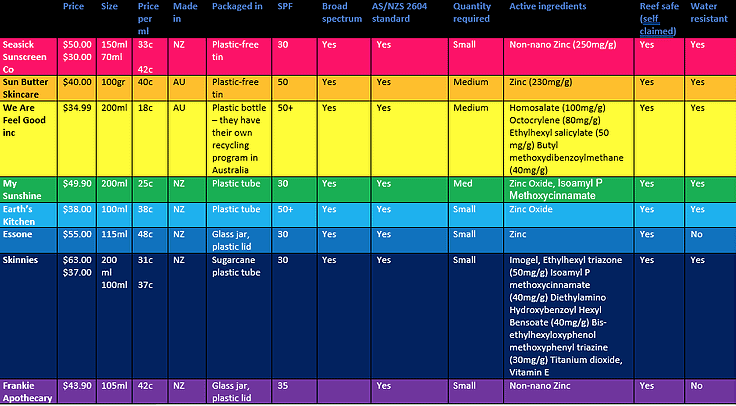
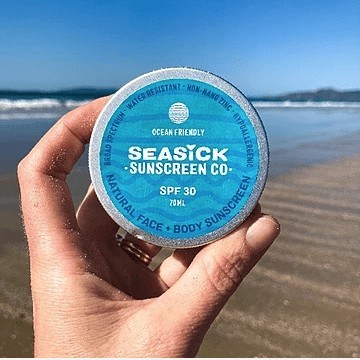
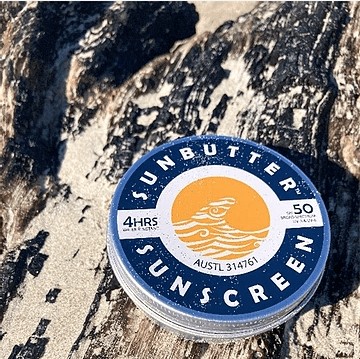
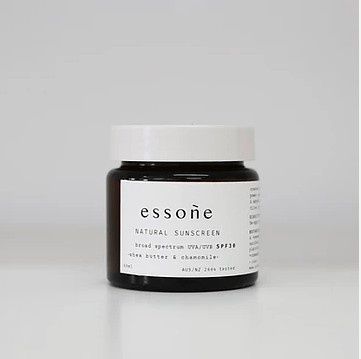

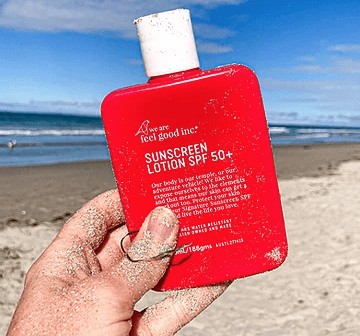
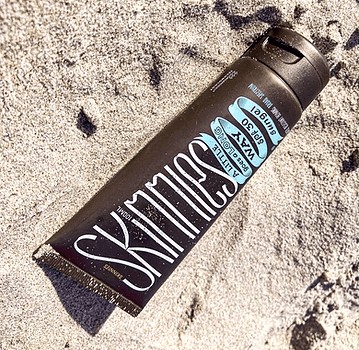
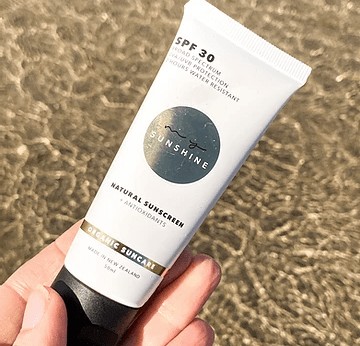

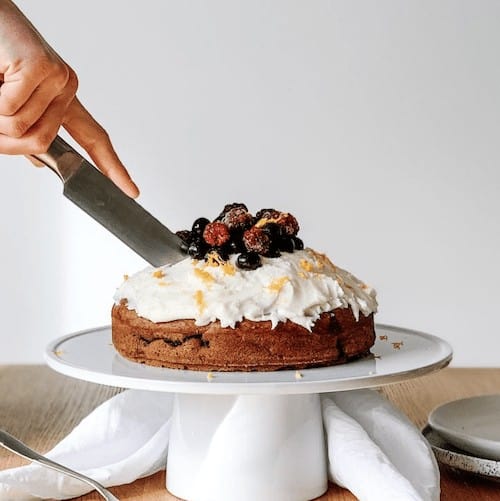
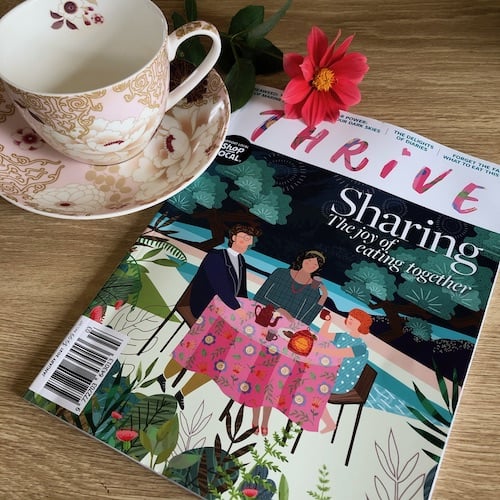
About The Author: Callumfatweb
More posts by Callumfatweb